
Moving Bed Biofilm Reactor
Get Price Quote
1 Piece (MOQ)
MBBR (Moving Bed Biofilm Reactor) and FAB (Fixed Activated Sludge) technologies enhance the activated sludge process by promoting the growth of microorganisms on suspended or fixed media. This facilitates the efficient breakdown of organic Pollutants in Sewage.
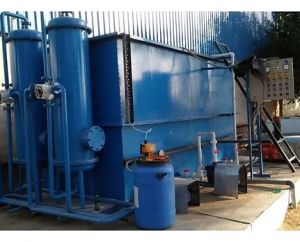
Moving Bed Biofilm Reactor
Get Price Quote
1 Piece (MOQ)
Best Deals from Moving Bed Biofilm Reactor
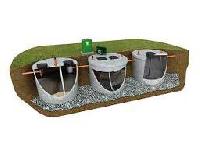
Moving Bed Biological Reactor
Get Price Quote
We offer highly efficient Moving Bed Biological Reactor or submerged aerobic fixed film reactor. We are engaged in providing clients Moving Bed Biological Reactor that primarily removes wastewater in three stages that are primary settlement, aeration and final settlement. This robust treatment plant is simple in design and suitable for broad range of applications. This system can be supplied and installed with air blowers. Apart from this, minimum civil work is required. Work Process : Primary Settlement : initial settlement of wastewater and separation of gross solids occurs in the primary settlement tank. The gross solids in the wastewater form sludge at the bottom of the tank and lighter social debris forms a crust on the surface. The settled liquor that is contained between the sludge and crust passes forward through an outlet filter for treatment in the aeration chamber. Aeration : the moving bed biological reactor (MBBR) employs a submerged media onto which micro-organisms attach. This biomass requires oxygen to flourish. This is supplied by aerating the liquid in the chamber. The biomass retained on the media provides effective treatment for effluent. The media are kept in motion by the course bubble aeration. The air introduced into the tank ensures thorough mixing and turnover of the media within the reactor. Final Settlement : the effluent passes forward for the final stage of treatment and enters the final settlement tank through a stilling well. This slows the velocity of the effluent and allows any remaining fine solids to settle. The base of the tank is coned allowing final settlement of the effluent to take place with minimal disturbance to any settled particles. The return sludge pump is located at the base of the tank and any remaining fine solids are returned via a sludge return line to the primary settlement tank. The treated effluent emerges from the system through the outlet for disposal. Benefits Of MBBR : High treated effluent quality Small footprint Robust treatment plant (concrete tanks) Below ground installation simplicity of design, installation & operation Suitable for a broad range of applications The MBBR treatment process can be provided for a new sewage treatment works or for retrofitting or upgrading existing wastewater treatment plants where a higher treated effluent. Features included as standard in the MBBR treatment plant : Pre-cast concrete tanks Air blowers supplied and installed Minimum civil work required
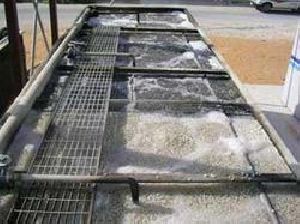
Moving Bed Biofilm Reactor
500,000 Per Piece
Having a definite quality management system, we are regarded as the noteworthy manufacturer, and supplier of optimum quality Moving Bed Biofilm Reactor. The provided biofilm reactor is widely used for waste water treatment in various municipal co-operations and industries. Our offered biofilm reactor is manufactured by utilizing qualitative components and advanced technology, under the supervision of our adept professionals. The offered biofilm reactor is tested on numerous quality parameters to ensure its high quality and flawlessness. Features High performance Robust structure Durability
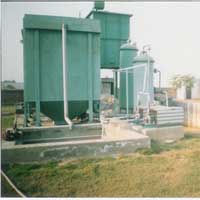
Moving Bed Biofilm Reactor
Get Price Quote
Trickling filters with rock packing have been a common, simple, and low-energy process used for secondary treatment since the early 1900s. A trickling filter is a non submerged fixed film biological reactor using rock or plastic packing over which wastewater is distributed continuously. Treatment occurs as the liquid flows over the attached biofilm. The concept of a trickling filter grew from the use of contact filters in the England in the late 1890s. Originally they were watertight basins filled with broken stones and were operated in a cyclic mode. The bed was filled with wastewater from the top, and the wastewater was allowed to contact the packing for a short time. The bed was then drained and allowed to rest before the cycle was repeated. A typical cycle required 12 h (6 h for operation and 6 h of resting). The limitations of the contact filter included a relatively high incidence of clogging the long rest period required, head loss, and the relatively low loading that could be used. Because of the clogging problems, larger packing was used until a rock size of 50 to 100 mm (2 to 4 inch) was reached (critics and tchobanoglous1998). In the 1950s, plastic began to replace rock in the United States. The use of plastic packing allowed the use of higher loading rates and taller filters (also known as Biotowers) with less land area, improved process efficiency and reduced clogging. In the 1960s, practical designs were developed for rotating biological contactors (RBC), which provided an alternative attached growth process where the packing is rotated in the wastewater treatment tank, versus pumping and applying the wastewater over a static packing. Both trickling filters and RBC have been used as aerobic attached growth processes for BOD removal only, combined BOD removal and nitrification and for tertiary nitrification after secondary treatment by suspended growth or attached growth processes. The principal advantages claimed for these aerobic attached growth processes over the activated-sludge processes are as follows : Less energy requiredSimpler operation with no issues of mixed liquor inventory control and sludge wastingNo problems of bulking sludge in secondary clarifiersBetter sludge thickening propertiesLess equipment maintenance needsBetter recovery from shock toxic loads In comparison to the activated sludge process many disadvantages often cited for trickling filters, such as poorer effluent quality in terms of BOD and TSS concentrations, greater sensitivity to lower temperature, odor production, and uncontrolled solids sloughing events, are related more to the specific process and final clarifier designs than to the actual process capabilities (wef, 2000). In general, the actual limitations of the processes (1) make it difficult to accomplish biological nitrogen and phosphorous removal compared to single sludge biological nutrient removal suspended growth designs, and (2) result in an effluent with a higher turbidity than activated-sludge treatment. Trickling filters and RBC have also been used in combined processes with activated sludge to utilize the benefits of both processes, in terms of energy saving and effluent quality. Mass Transfer Limitations A significant process feature of attached growth processes in contrasted to activated sludge treatment is the fact that the performance of the biofilm processes is often diffusion limited. Substrate removal and electron donor utilization occur within the depth of the attached growth biofilm and subsequently the overall removal rates are function of diffusion rates and the electron donor and electron acceptor concentrations at various locations in the biofilm. By comparison the process kinetics for the activated-sludge process is generally characterized by the bulk liquid concentrations. The diffusion-limited concept is especially important when considering the measurable bulk liquid do concentrations on attached growth process biological reaction rates. Concentration of 2 to 3 mg/l is generally considered satisfactory for most suspended growth aerobic processes. Such low do concentration can be limiting for attached growth process. For uninhibited nitrification in the biofilm a much higher do concentration may be required depending on the ammonia concentration. The concept of diffusion limitations on nitrification rates and the ability to develop anaerobic layers within the biofilm may be exploited to accomplish both nitrification and in de nitrification in attached growth processes with positive bulk liquid do concentrations. Investigators have shown how aerobic and anaerobic layers can be developed in the biofilm to accomplish nitrogen removal nitrification and de nitrification (Chuiet al. 1996; Richter and Kruner, 1994; and Meaney and Strickland, 1994). However, Acsion has developed this technology in such a way simple to operate and the maximum technical benefit to the client. Upgraded and modified technique has yielded cost effective results there by achieved operational cost to the minimum level and also steady and stable plant results. Ongoing improvements in the R&D of Acsion will elevate this technology in to the next ladder in the future.

Moving Bed Biological Reactor
Get Price Quote
The Ionberg provides clients Moving Bed Biological Reactor that primarily removes wastewater in three stages that are Primary Settlement, Aeration and Final Settlement. This robust treatment plant is simple in design and suitable for broad range of applications. This system can be supplied and installed with air blowers. Apart from this, minimum civil work is required. Process Primary Settlement : Initial settlement of wastewater and separation of gross solids occurs in the primary settlement tank. The gross solids in the wastewater form sludge at the bottom of the tank and lighter social debris forms a crust on the surface. The settled liquor that is contained between the sludge and crust passes forward through an outlet filter for treatment in the Aeration Chamber. Aeration : The Moving Bed Biological Reactor (MBBR) employs a submerged media onto which micro organisms attach. This biomass requires oxygen to flourish. This is supplied by aerating the liquid in the chamber. The biomass retained on the media provides effective treatment for effluent. The media are kept in motion by the course bubble aeration. The air introduced into the tank ensures thorough mixing and turnover of the media within the reactor. Final Settlement : The effluent passes forward for the final stage of treatment and enters the final settlement tank through a stilling well. This slows the velocity of the effluent and allows any remaining fine solids to settle. The base of the tank is coned allowing final settlement of the effluent to take place with minimal disturbance to any settled particles. The return sludge pump is located at the base of the tank and any remaining fine solids are returned via a sludge return line to the primary settlement tank. The treated effluent emerges from the system through the outlet for disposal.

Moving Bed Biofilm Reactor
Get Price Quote
Moving bed biofilm reactor of sizes larger than the openings of filtering mesh. The waste is removed periodically from the mesh by the rake.The waste is then removed from the rake and discharged to the transporter or the waste bin by means of the gravity slide. The screen operation periodicity depends on the automation scheme.

Moving Bed Biofilm Reactor
Get Price Quote

Moving Bed Biofilm Reactor
Get Price Quote
Moving Bed Biofilm Reactor (MBBR) The Moving Bed Biofilm Reactor (MBBR) technology was developed in Norway at the Norwegian University of Science and Technology in cooperation with a Norwegian company Kaldnes Miljǿteknologi (now AnoxKaldnes AS). The MBBR is a complete mix, continuous flow through process which combines the benefits of fixed film and suspended growth processes. Benefits include increased treatment capacity, improved settling characteristics, enhanced process stability, and reduced sludge production (Metcalf & Eddy, 2003). The process can either be used as a 1. pre-treatment system ahead of an existing activated sludge system for increased organic matter removal 2. stand alone biological treatment process for BOD removal, nitrification and/or denitrification 3. a retrofit of an existing activated sludge processes to help increase overall nitrification capacity of the existing system. The MBBR process uses small plastic carrier elements to provide sites for bacteria attachment in a suspended growth medium. The carrier elements allow a higher biomass concentration to be maintained in the reactor compared to a suspended growth process, such as activated sludge. This increases the biological treatment capacity for a given reactor volume. The carrier elements are continuously kept in suspension by either a mixer or an aeration system. The agitation pattern in the reactor is designed to provide an upward movement of the carriers across the surface of the retention screen which creates a scrubbing effect to prevent clogging. Coarse bubble and jet aeration are typically used to provide oxygen for an aerobic reactor. Reports using fine bubble aeration in an MBBR system indicate the media cause the bubbles to coalesce, thereby reducing oxygen transfer efficiency (Zimmerman, et al., 2005). MBBR Design Parameters: Organic surface loading rate (g BOD/m2d) Normal rate : 10 – 13 g BOD/m2d @25°C Protected surface area of carrier (m2/m3) 400 – 680 m2/m3 The Biomedia carrier filling fraction (%). Normally: 50 – 67 % (minimum 30%) Aeration Grid A stainless steel coarse bubble aeration system is employed to mix the suspended media evenly throughout the reactor while providing the mixing energy required to slough old biofilm from the internal surface area of the media and maintain the dissolved oxygen required to support the biological treatment process.
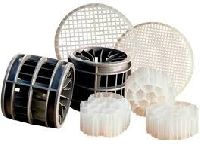
Moving Bed Biofilm-Reactor
Get Price Quote
Moving Bed Bio-Reactor (MBBR) Fluidized Aerobic Bed Reactor (FAB) is an advanced high rate wastewater treatment process, utilizing free-floating media which houses huge quantity of active biomass (MLSS). Aventura’s MBBR FAB media provides additional surface area for microbial growth thereby increasing the organic load rate. The media is cylindrical in shape with extended fins and is made of using high quality UV stabilized virgin PP material.Excellent bio-surface area,Low density to avoid deep submerge,Clog-free operation,Extremely robust & reliable,Long media service life

Mbbr System ( Moving Bed Biofilm Reactor )
Get Price Quote
We are offering mbbr system ( moving bed biofilm reactor ). The moving bed bio-reactor (mbbr) technology is a type of system, which helps purify water efficiently and effectively. The system is increasingly adopted by several industries, because it has qualities to improve reliability, simplify operations and most importantly it requires less space than those old-age wastewater treatment systems. Since mbbr system brings multiple benefits to our clients, as a reputed water treatment manufacturer and supplier in pune, india, we use this technology. This system integrates a heavy amount of polyethylene bio-film and, carriers wastewater treatment basin. What important news about mbbr system is that its each bio-carrier boosts production level by providing a secured surface area for supporting the growth of heterotrophic and autotrophic bacteria within its cells. It is a high-density population of bacteria, which achieves high-rate biodegradation within the system, while also offering process reliability and ease of operation. What makes mbbr system apart from other technologies is that, it provides you with water treatment solutions at rock-bottom prices. It requires minimum maintenance as it has features of maintaining its optimum level of productive bio-film. Moreover, the mbbr system integrates fixed-film technology wherein it attaches bacteria inert biological carrier profiles (bio-elements, bio-media, bio-logical carriers). They are further retained within the reactor by screens. This is how it demolishes the need for a return activated sledges system and reduces the requirements for subsequent filtration steps. In this fast-paced world, every industry looks for mbbr system implementation, especially if they have limited space and are searching for an affordable solution to treat water.

Moving Bed Biofilm Reactor
Get Price Quote
The moving Bed Biofilm reactor process is based on the aerobic biofilm principle and utilizes the advantages of activated sludge..

Moving Bed Biofilm Reactor
Get Price Quote
The MBBR system consists of an aeration tank (similar to an activated sludge tank) with special plastic carriers that provide a surface where a biofilm can grow. The carriers are made of a material with a density close to the density of water (1 g/cm3). An example is high-density polyethylene (HDPE) which has a density close to 0.95 g/cm3. The carriers will be mixed in the tank by the aeration system and thus will have good contact between the substrate in the influent wastewater and the biomass on the carriers.[2] To prevent the plastic carriers from escaping the aeration it is necessary to have a sieve on the outlet of the tank. Moving Bed Biofilm Reactor (MBBR) processes improve reliability, simplify operation, and require less space than traditional wastewater treatment systems. MBBR technology employs thousands of polyethylene biofilm carriers operating in mixed motion within an aerated wastewater treatment basin. Each individual biocarrier increases productivity through providing protected surface area to support the growth of heterotrophic and autotrophic bacteria within its cells. It is this high-density population of bacteria that achieves high-rate biodegradation within the system, while also offering process reliability and ease of operation. This technology provides cost-effective treatment with minimal maintenance since MBBR processes self-maintain an optimum level of productive biofilm. Additionally, the biofilm attached to the mobile biocarriers within the system automatically responds to load fluctuations. Advantages The MBBR system is considered a biofilm process. Other conventional biofilm processes for wastewater treatment are called trickling filter, rotating biological contactor (RBC) and biological aerated filter (BAF). Biofilm processes in general require less space than activated sludge systems because the biomass is more concentrated, and the efficiency of the system is less dependent on the final sludge separation. A disadvantage with other biofilm processes is that they experience bioclogging and build-up of headloss. [1]

Moving Bed Biofilm Reactor
Get Price Quote
We are offering moving bed biofilm reactor.

Sewage Treatment Plant (MBBR)
Get Price Quote
Sewage Treatment Plant (MBBR), Media Filters
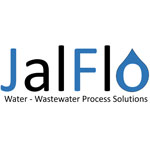
Moving Bed Biofilm Reactor
Get Price Quote
Moving Bed Biofilm Reactor, wastewater treatment services, Water Treatment

Moving Bed Biofilm Reactor
Get Price Quote
Moving Bed Biofilm Reactor, Erection Crash Barrier, Tube Settler

Moving Bed Biofilm Reactors
Get Price Quote
Moving Bed Biofilm Reactors, Electro Chlorinator, Chlorine Dosing System